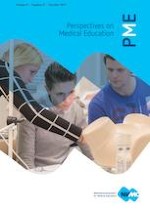Introduction
Methods
The innovation
The evaluation
Design
Participants
Data analyses
Results
Previous | Multi-TLC | Difference | |
|---|---|---|---|
Residents (n) | 16 | 31 | +15 |
Monetary costs (CAD) | $6240 | 0 | −$6240 |
Faculty time (total) | 78 h | 32 h | −64 h |
Resident time (per resident) | 6 h | 8 h | +2 h |
Competencies assessed | 3 | 6 | +3 |
I liked that we had split levels so senior and junior working together. [I]t is nice to learn from our seniors and see how we will develop in time. (PGY2 #3)I think it was really a great experience for both of us, because they (PGY2) could ask questions, but we could also teach our juniors and maybe learn from things they did well. (PGY5 #2)
It gives you a little insight too, into what it must be like to be a nurse with doctors yelling orders at you—this was a good learning experience for me. (PGY2 #2)
I think it’s harder to make it as realistic when it’s your colleague. (PGY5 #4)
I think the benefit of them being your colleagues is that they are able to give constructive criticism because they do have that similar understanding. (PGY2 #5)
I think its fine to give feedback to the PGY2s but almost inappropriate to give feedback to the PGY5s in front of the juniors. (PGY4 #3)
I feel open to receiving feedback from whomever … even the junior in my scenario. (PGY5 #1)
